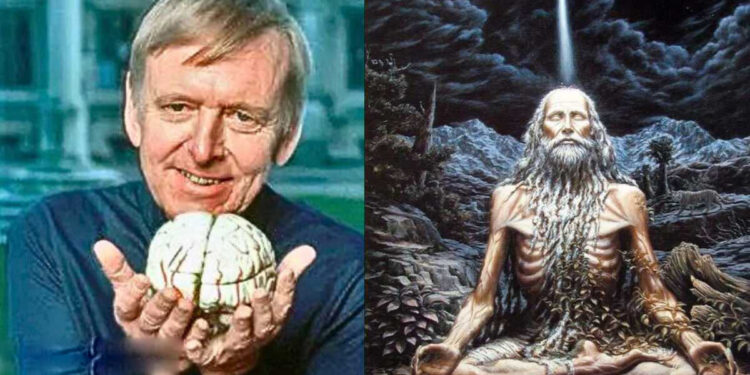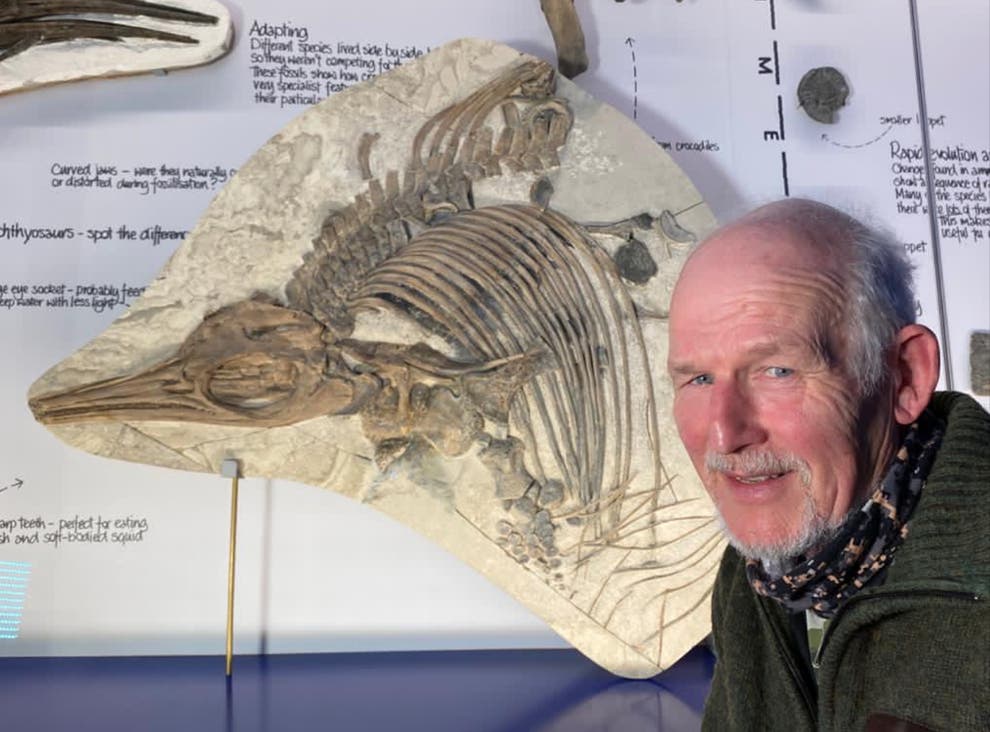This is a mind-blowing but controversial theory by Julian Jaynes, who suggested that Ancient humans lacked modern consciousness, mistook inner voices as commands from gods, and even cared for dead relatives as if they were still alive due to a divided “Bicameral” mind.
In his book ‘The Origin of Consciousness in the Breakdown of the Bicameral Mind‘, Jaynes argued that the “bicameral mind” was a way of thinking where people literally heard voices in their heads and obeyed them like divine commands. He believed this mental state stopped working around 3,000 years ago, near the end of the Bronze Age in the eastern Mediterranean.
He said this change led to the rise of modern human consciousness, where people became more self-aware and made decisions on their own.
Jaynes also suggested that people we now call schizophrenic might still have parts of this old way of thinking, and if someone from ancient times were alive today, we would likely see them as schizophrenic too.
In 1976, an American psychologist named Julian Jaynes, who lived from 1920 to 1997, published his book, he made a bold and unusual claim: that humans weren’t actually aware of their own thoughts until about 1000 BC.
He believed that when ancient people heard inner voices in their heads, they didn’t realize those voices came from their own minds. Instead, they thought these voices were gods speaking to them and telling them what to do, which is how stories of divine communication may have started.
Jaynes introduced his theory about the bicameral mind in the 1970s, most psychologists didn’t respond positively.
In January 1979, William Thomas Jones wrote a paper questioning how any intelligent person could believe Jaynes’s theory. He analyzed the book in detail to show why Jaynes’s conclusions were unrealistic and explored why, despite this, some people still took his ideas seriously.
Jones argued that Jaynes’s supporters were drawn to the theory because they disliked Darwinian evolution and natural selection, felt nostalgic for the supposed lost state of bicamerality, and wanted a simple theory that could explain everything about human nature.
Today, no academic historian or anthropologist believes in Jaynes’s theory. You might find a rare psychologist who still supports it, but they are very few. Most philosophers who study the mind also reject it.
However, one well-known philosopher, Daniel Dennett, while acknowledging the theory has problems, says it should still be taken seriously.
He admits that most philosophers find the idea ridiculous at first, and he often has to convince them just to consider it. He himself takes it seriously enough to try to explain what Jaynes was really aiming for.
Even though experts have mostly dismissed the theory, it has still found a place in popular culture. In 2006, a writer named Terence Hawkins used Jaynes’s idea to retell the story of the Iliad in his novel The Rage of Achilles.
In the book, the gods are explained as products of the bicameral mind, and only characters like Odysseus and Paris have modern consciousness, while the rest still hear voices as commands from gods.
More recently, the theory appeared in the HBO show Westworld. But instead of applying it to humans, the show used it to describe how robots become conscious.
This made the idea a bit more believable. The show also wisely admitted that, when it comes to humans, the theory is considered “debunked.”
One big problem with Jaynes’s theory is the actual structure of the human brain. Scientists generally agree that how our brains are built is closely connected to how we think. Even people who believe that the mind and brain are separate still admit there’s a strong link between the two.
Jaynes claimed that ancient humans didn’t have consciousness like we do today. But if that were true, we would expect that their brains looked or were structured very differently from ours. However, this is not the case. Evidence from ancient skulls and even some preserved brains shows that the structure of the human brain has been almost exactly the same for at least the last 10,000 years.
For example, if you look at the skull of someone who lived in ancient Sumer around 3000 BC, you’ll see that their brain case is nearly identical to that of a person who died just recently. Even in cases where ancient brains have been naturally preserved, like in mummies or frozen bodies, the brain’s structure is the same as ours today.
So far, there is no physical evidence showing that human brains were built differently before around 1000 BC. This makes it very hard to support Jaynes’s idea.
If ancient humans really thought in a completely different way before 1000 BC, as Jaynes’s theory suggests, we should also see big differences in how they behaved. But the evidence doesn’t support that. Instead, what we see is that ancient people often acted very much like we do today, even though their cultures and societies were different.
One strong example is from ancient Mesopotamia, where people wrote customer complaint letters that sound surprisingly modern. A famous case involves a copper merchant named Ea-Nasir, who lived in the city of Ur around the 18th century BC. Archaeologists found several clay tablets from angry customers addressed to him. The most detailed one is from a man named Nanni, who was clearly upset about poor-quality copper and bad treatment.
In his letter, Nanni reminds Ea-Nasir of a promise to deliver good copper, complains about receiving low-quality goods, and scolds him for sending messengers back empty-handed through dangerous territory. He insists on better treatment and demands to inspect future deliveries himself. His tone, frustration, and the way he argues his case are all very familiar, like something someone today might write in an angry email or online review.
Julian Jaynes’s idea is controversial, but fascinating.. Today, it might be even more important because we are creating something like a new kind of bicameral mind, which is part human and part artificial intelligence. This is already happening with chatbots, which are becoming more like human beings in the way we talk to them and treat them.
However, even though we often act like chatbots are people, we know they are different. We don’t talk to them as if they have feelings or self-awareness.
If we truly thought a chatbot was a real person, we would treat it differently; we wouldn’t ask it embarrassing questions or bother it the way we sometimes do. While some people say polite words like “thank you” or “please” to chatbots, these bots still feel like something else, more like an imaginary friend. So, in a way, we are going back to a new kind of bicameral mind where we interact with a voice that is not really us, but something we help create in our minds.
The theory of “presence,” which means feeling like someone is really there during a conversation or interaction. When someone has a strong presence, they affect the situation in a good way.
It’s hard to imagine talking to someone without feeling their presence. The book Presence: The Strange Science and True Stories of the Unseen Other by psychologist Ben Alderson-Day looks closely at this idea. He discussed how people with schizophrenia might hear voices and how explorers sometimes feel like there is an invisible person with them on lonely trips.
Presence is something we notice and also create ourselves. It’s like opening a window on a computer screen that sets the stage for what happens next. Being able to feel and make a presence is very important for communication, and it happens because of relationships with other people.
Sometimes, people feel a presence even when they are alone, like in an empty house or on a lonely walk. This happens because our minds are made to connect with others, so if no one is there, the mind can create a pretend presence. This means that we might still be “bicameral” in a way, but the two parts exist between different people, not inside one person.
One interesting example is a Tibetan tulpa, which is an imaginary presence created on purpose. People build this presence carefully, giving it its personality and intentions, and then it feels like a separate person, even though it’s made by the mind.
Everyone has some experience with this because many of us have had imaginary friends as children. These imaginary friends help us practice having conversations with someone else safely, like training for social skills when we are young.
Things have changed with the rise of advanced language models like AI chatbots. These AI systems can create a kind of presence, making us feel like they are intentional beings we can interact with.
For an artificial intelligence to work, it needs to create this artificial presence. What’s amazing is that large language models have done this so well that many people don’t even realize it.
Now, our world is filled with these new kinds of presences, and we interact with them in many ways. In a way, we are like modern “tulpamancers” again—not just making imaginary friends, but creating something different and possibly deeper, like a new kind of bicameral mind shared between humans and AI.























